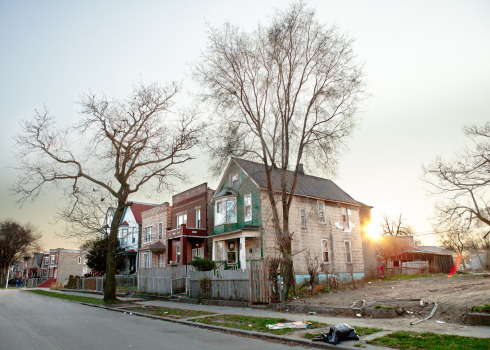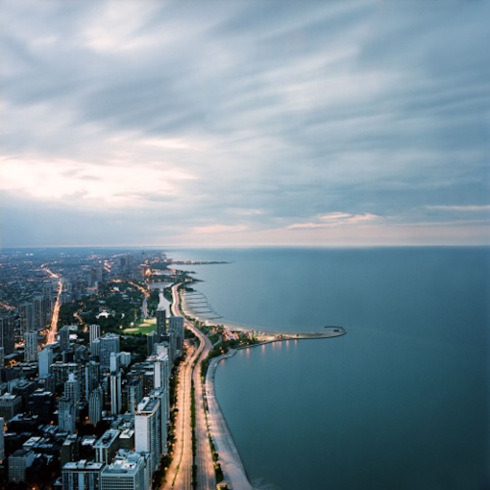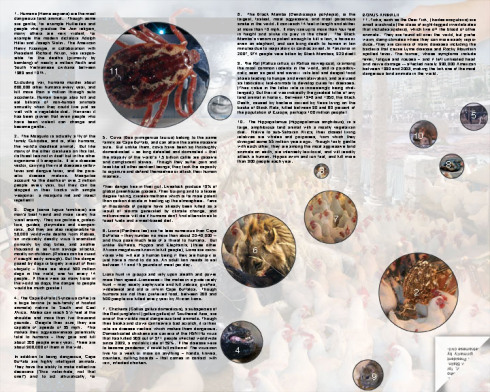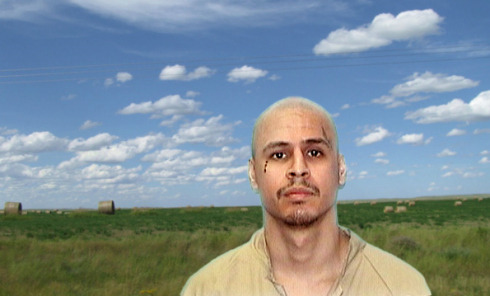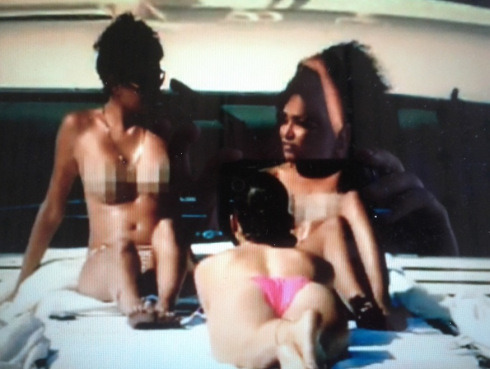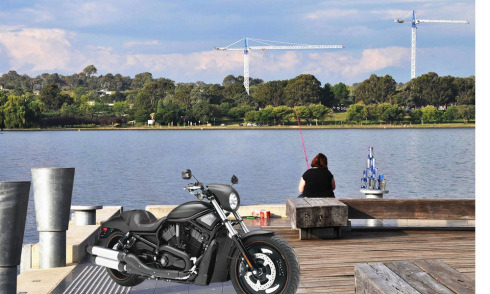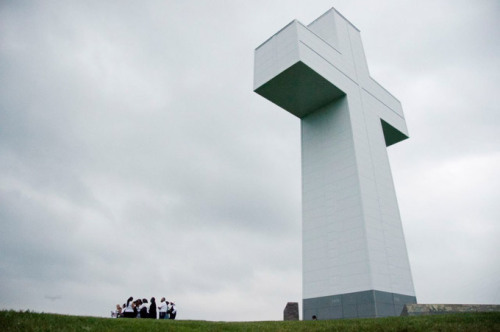“Photo Requests from Solitary” was one of many projects launched by Tamms Year Ten to build publicit
“Photo Requests from Solitary” was one of many projects launched by Tamms Year Ten to build publicity for the campaign to reform or close the Tamms Prison of Illinoise. The men in Tamms were invited to request a photograph of anything in the world, real or imagined. The resulting requests were touching and often surprising. They included: the sacred mosque in Mecca, comic book heroes locked in epic battle, Egyptian artifacts, Tamms Year Ten volunteers and a brown and white horse rearing in weather cold enough to see his breath. Willie Sterling III asked for a photograph of a vigil at Bald Knob Cross on top of a hill in southern Illinois to pray for his deliverance from Tamms and to be granted parole. Tamms Year Ten caravanned down to the cross, held a litany of song and prayer and celebrated with a dinner. The next day, we drove family members to visit loved ones at the prison. Sterling was transferred from Tamms, and on July 27, 2012, he was paroled after 36 years in prison. The Tamms prison in Illinois, which helped fuel a nationwide movement against solitary confinement and “supermax” prisons, shut its doors on January 4 [2013].Prison reform advocates celebrated the closure, which they say ends more than a decade of torture for the men incarcerated inside Tamms.“There is not a single man left behind. The era of the notorious Tamms supermax prison is over,” reads the Facebook page of Tamms Year Ten, the activist group working to close the prison. “We are going through stages of relief, disbelief, celebration and reflection.” via truthout.orgBackground:In 1998, Illinois opened a prison without a yard, cafeteria, classrooms or chapel. Tamms Supermax was designed for just one purpose: sensory deprivation. No phone calls, communal activities or contact visits were allowed. Men could only leave their cells to shower or exercise alone in a concrete pen. Food was pushed through a slot in the door. The consequences of isolation were predictable: many men fell into severe depression, experienced hallucinations, compulsively cut their bodies or attempted suicide.The first men at Tamms were transferred there from other prisons around the state for a one-year shock treatment intended to break down disruptive prisoners and make them more compliant. But the Illinois Department of Corrections (IDOC) left them there indefinitely. A decade later, more than a third of the men at Tamms had been there since it opened, and for no apparent reason.Research has shown that supermax prisons don’t reduce prison violence or rehabilitate prisoners. On the contrary, isolation induces or exacerbates mental illness, creates stress and tension, worsens behavior and undermines the ability of people to function once they get out.Despite its uselessness as a form of correction, Tamms had many strong supporters: the powerful union to which the prison guards belonged, the nearby towns that welcomed the well-paid jobs, and state officials who thrived on tough-on-crime politics. They all deployed a single phrase meant to paralyze any possible dissenters: the worst of the worst. This slogan was applied to the men at Tamms to suggest they deserved the worst possible treatment—long-term solitary confinement that human rights monitors uniformly describe as cruel, inhuman and degrading, if not outright torture. Challenging this label and this punishment became the project of Tamms Year Ten, a campaign launched in 2008, a decade after the supermax opened.(read the full and EXCELLENT article of its history and the activities leading to its closure at creativetimesreports.orginforgraph of PrisonInception of TAMMS YEAR TEN:In the beginning, while the prison was still being constructed in 2006 a group of Chicago artists, poets and musicians formed the Tamms Poetry Committee. Two of them, Laurie Jo Reynolds included, had been members of a group that had protested plans to construct the supermax. Following the practice of two women who sent holiday cards to the prison, we sent letters and poems to every man at Tamms to provide them with some social contact. Their replies demonstrated the necessity of this project: “Hi Committee, is this for real? I can’t believe someone cares enough to send a pick-me-up to the worst-of-the-worst. Well, if nobody else has said it, I will: THANK YOU.” But we quickly found ourselves deluged with pleas for help: “Hey, this poetry is great, but could you please tell the governor what they’re doing to us down here?”By 2008, we had connected with men on the outside who had spent years in Tamms and family members of current prisoners. Together, we launched the Tamms Year Ten campaign. Our goal was to educate the public about Tamms and hold the IDOC, legislators and then-Governor Blagojevich accountable for the use of long-term isolation. Prison reform is hard enough, but getting people to stand up for “the worst of the worst” was considered hopeless. Attorneys and veteran prisoner advocates warned that this campaign could endanger the men and increase support for the prison. But we believed that recent controversy over solitary confinement and torture at Guantanamo Bay and Abu Ghraib opened a new space for debate. And in any case, after a decade of isolation with no end in sight, the men in Tamms didn’t have much to lose.Artistic interventions and activism:For much of the last year, the Tamms Year Ten office and its documents were showcased as an exhibition in the Sullivan Galleries at the School of the Art Institute of Chicago. But our campaign didn’t just use art forms like poetry, photography, graphic design and songs for the purposes of politics; it was itself what we call Legislative Art.[…]“Photo Requests from Solitary” was one of many projects launched by Tamms Year Ten to build publicity for the campaign. The men in Tamms were invited to request a photograph of anything in the world, real or imagined. The resulting requests were touching and often surprising. They included: the sacred mosque in Mecca, comic book heroes locked in epic battle, Egyptian artifacts, Tamms Year Ten volunteers and a brown and white horse rearing in weather cold enough to see his breath.Another project, Supermax Subscriptions is a collaboration between Temporary Services, artist Sarah Ross and the Tamms Poetry Committee to purchase magazines for supermax prisoners. Participants use their extra frequent flyer miles to purchase the magazines. We are trying to use the surplus from people who have the opportunity to travel great distances to help benefit those who never leave their cell. via yeartenThe Tamms Poetry Committee came together in order to do one of the few things that can be done to help people in permanent solitary confinement: write them letters. It makes a surprisingly big difference for the men to know that people on the outside care about their lives. We are working with the men at Tamms as much as possible to communicate their words, their experiences, and their testimony to the public. via yeartenTo read how these and other activites by YEARTEN brought around the close of TAMMS read the excellent article by creativetimesreports.orgPhotos via prisonphotography.org -- source link
#tamms#tamms prison#prison#solitary confinement
